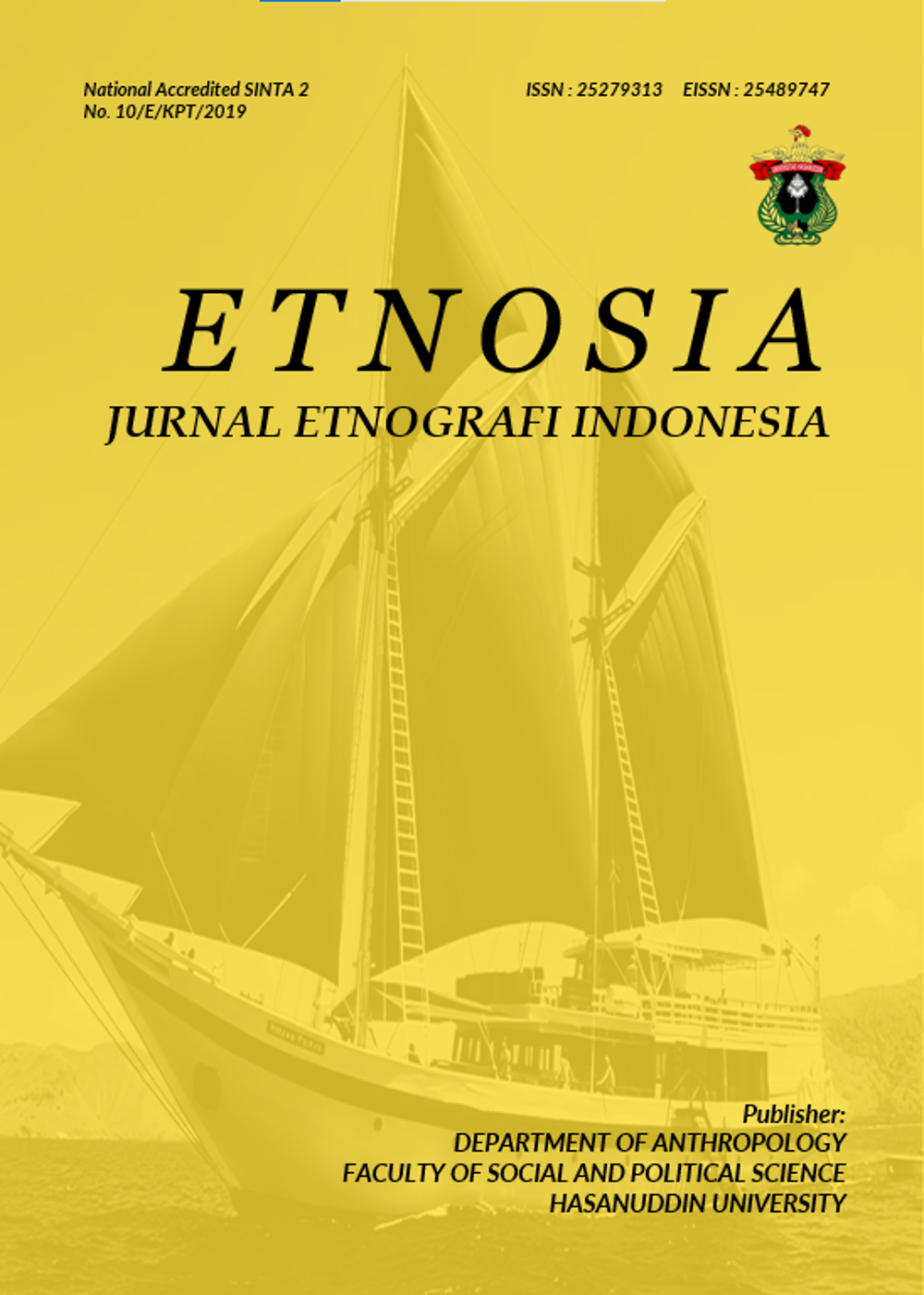Abstract
This research analyzes Pasang ri Kajang as local wisdom in Indigenous people Ammatoa Kajang becomes a social and political power. It maintains the existence of indigenous people Ammatoa Kajang in the customary land conflict with PT London Sumatra (Lonsum). Indigenous Peoples of Ammatoa Kajang, known as indigenous people who uphold the values of local wisdom, was called Pasang ri Kajang; one of them is their belief that forests are the center of life. The conflict has arisen since PT Lonsum has unilaterally taken over Ammatoa Kajang's customary land in several villages. The lack of regulation of the local government that protects the rights of the Kajang community makes the position of the Ammatoa Kajang indigenous community weak in resisting. The indigenous Ammatoa Kajang community and several environmental and indigenous peoples' institutions demanded that the Bulukumba district government make and ratify the Ranperda of the Ammatoa Kajang community that could protect the rights and recognition of the Ammatoa Kajang customary community. At the end of 2015, the Bulukumba district government ratified regional regulation No. 9/2015 about the Inauguration, Recognition, and Protection of Customary Law Communities Ammatoa Kajang. Ratification of this regulation is a form of deregulation carried out by the Bulukumba district government in responding to conflicts over land and forest struggles of the indigenous people of Ammatoa Kajang and PT. Lonsum.References
Boyer, R. (2005). Tate and Market: A New Engagement for the twenty-first century, in Robert Boyer & Daniel Drache, State against Markets: The Limits of Globalization. New York: Routledge Press.
Constitution of the Republic of Indonesia. (t.thn.). The 1945 Constitution of the Republic of Indonesia. Indonesia.
Hijjang, P. (2005). Tide and Ammatoa Leadership: Re-understand the Traditional Leadership System of Indigenous Peoples in Forest Resource Management in Kajang, South Sulawesi. Journal of Indonesian Technology, 29(3), 263.
Suci, U. F. (2016). Ecocentrism of the Ammatoa Kajang Indigenous Community in Maintaining Customary Forest in Bulukumba Regency.
James Connelly & Graham Smith. (2003). Politics and the Environment: from theory to practice, the second edition. Rout ledge press. New York.
Edy, Rafael B. (2006). Rights of Indigenous Peoples in the Context of Natural Resource Management. ELSAM, Jakarta.
Erman Syarif, Ach Fatchan, Sumarmi, I Komang Astina. (2016) Tradition of “Pasang Ri- Kajang” in the Forests Managing in System Mores of “Ammatoa” at District Bulukumba South Sulawesi, Indonesia. Mediterranean Journal of Social Sciences. Vol. 7 Numb. 6. P 327.
Mahmud. (2020). Settlement of Land Dispute Rights Ulayat Peoples Kajang with PT. PP London Sumatera Indonesia in Bulukumba District. Journal Indonesia Law & Policy Review. P. 74
H K Surtikanti, A Syulasmi, N. Ramdhani (2017). Traditional Knowledge of Local Wisdom of Ammatoa Kajang Tribe (South Sulawesi) about Environmental Conservation. Journal of Physics Conf Series 895(012122). P. 3.
Sampean S., Sofyan Sjaf (2020). The reconstruction of Ethnodevelopment in Indonesia: A New Paradigm of Village Development in the Ammatoa Kajang Indigenous Community, Bulukumba Regency, South Sulawesi. MASYARAKAT: Jurnal Sosiologi, Vol. 25 No. 2, P. 171.
Bulukumba Regency DPRD. Regional Regulation of Bulukumba Regency Number 9 of 2015 concerning Inauguration, Recognition of Rights, and Protection of the Rights of Indigenous Law Community Ammatoa Kajang, Chapter I, Article 1 paragraph (9), (10), (11).
Bulukumba Regency DPRD. Regional Regulation of Bulukumba Regency Number 9 of 2015 concerning Inauguration, Recognition of Rights, and Protection of the Rights of Indigenous Law Community Ammatoa Kajang,Chapter VII, Article 12 paragraph (1), (2), (3), (4).
Bulukumba Regency DPRD. Regional Regulation of Bulukumba Regency Number 9 of 2015 concerning Inauguration, Recognition of Rights, and Protection of the Rights of Indigenous Law Community Ammatoa Kajang,Chapter IX, Article 15 paragraph (1), (2), (3).

This work is licensed under a Creative Commons Attribution-NonCommercial 4.0 International License.
Copyright (c) 2021 ETNOSIA : Jurnal Etnografi Indonesia





